Ford Escape: Fuses and relays
Fuses
If electrical components in the vehicle are not working, a fuse may have blown. Blown fuses are identified by a broken wire within the fuse. Check the appropriate fuses before replacing any electrical components.

Note: Always replace a fuse with one that has the specified amperage rating. Using a fuse with a higher amperage rating can cause severe wire damage and could start a fire.
Standard fuse amperage rating and color
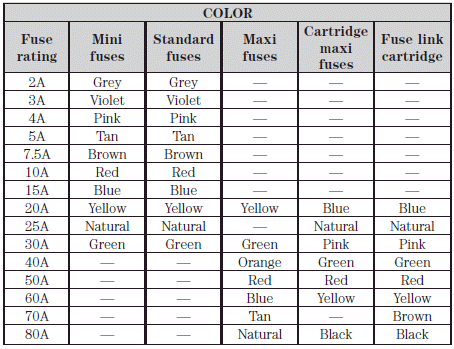
Passenger compartment fuse panel
The fuse panel is located on the right-hand side of the center console, by the instrument panel.
Remove the panel cover to access the fuse cover. Press the tabs on the top and bottom of the fuse cover to remove.
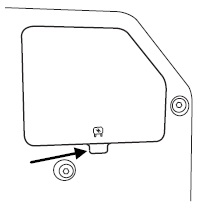
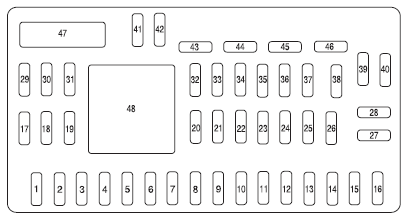
The fuses are coded as follows
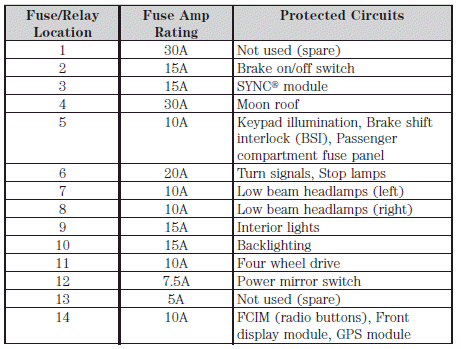
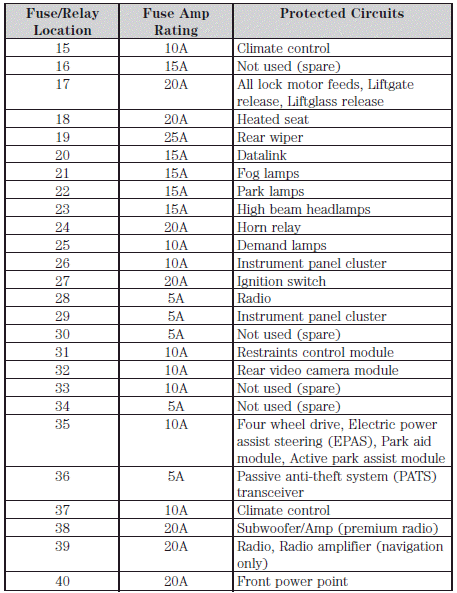
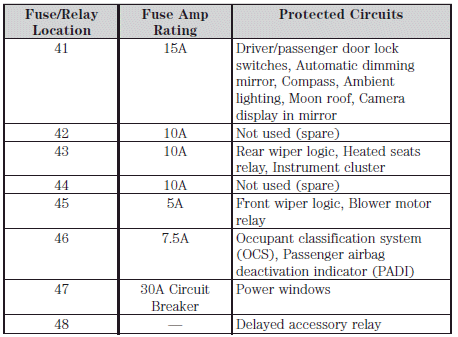
Power distribution box
The power distribution box is located in the engine compartment. Refer to the Identifying components in the engine compartment section of the Maintenance and Specifications chapter for the location. The power distribution box contains high-current fuses that protect your vehicle’s main electrical systems from overloads.
![]() WARNING: Always disconnect the battery before servicing high
current fuses.
WARNING: Always disconnect the battery before servicing high
current fuses.
![]() WARNING: To reduce risk of electrical shock, always replace
the cover to the Power Distribution Box before reconnecting the
battery or refilling fluid reservoirs.
WARNING: To reduce risk of electrical shock, always replace
the cover to the Power Distribution Box before reconnecting the
battery or refilling fluid reservoirs.
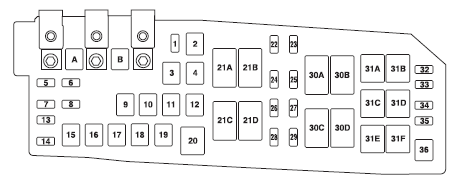
The high-current fuses are coded as follows.
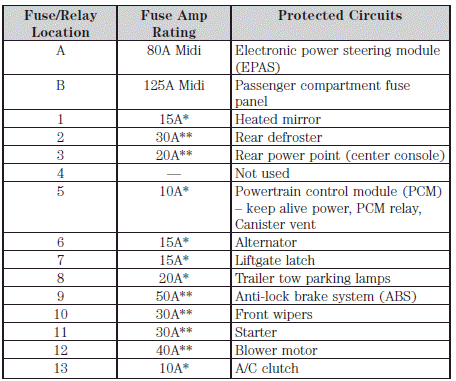
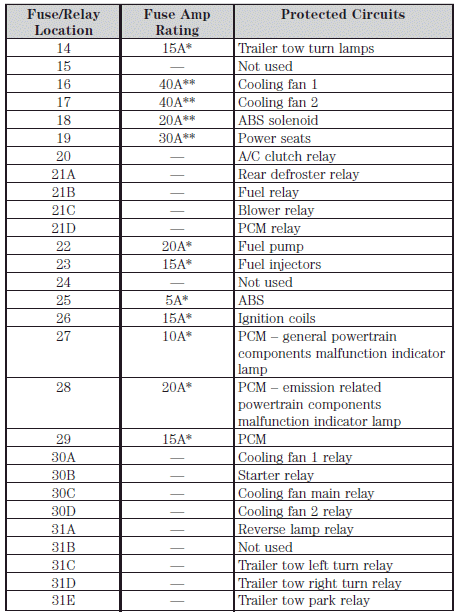
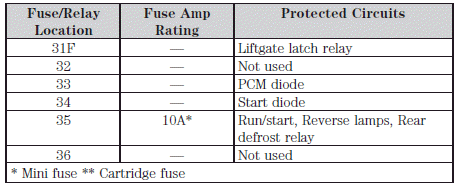
See also:
Uniform tire quality grading standards
This information indicates the relative
performance of passenger car
tires in the area of treadwear,
traction, and temperature resistance.
This is to aid the consumer
in making an informed choice in the
purchase of tires.
Quality grades c ...
Roof Rack System
WARNING
If something is carried on top of the vehicle that is longer or wider than the
roof rack—like paneling, plywood, or a mattress—the wind can catch it while the
vehicle is being driven. The item being carried could be violently torn of ...

 Roadside Assistance
Roadside Assistance